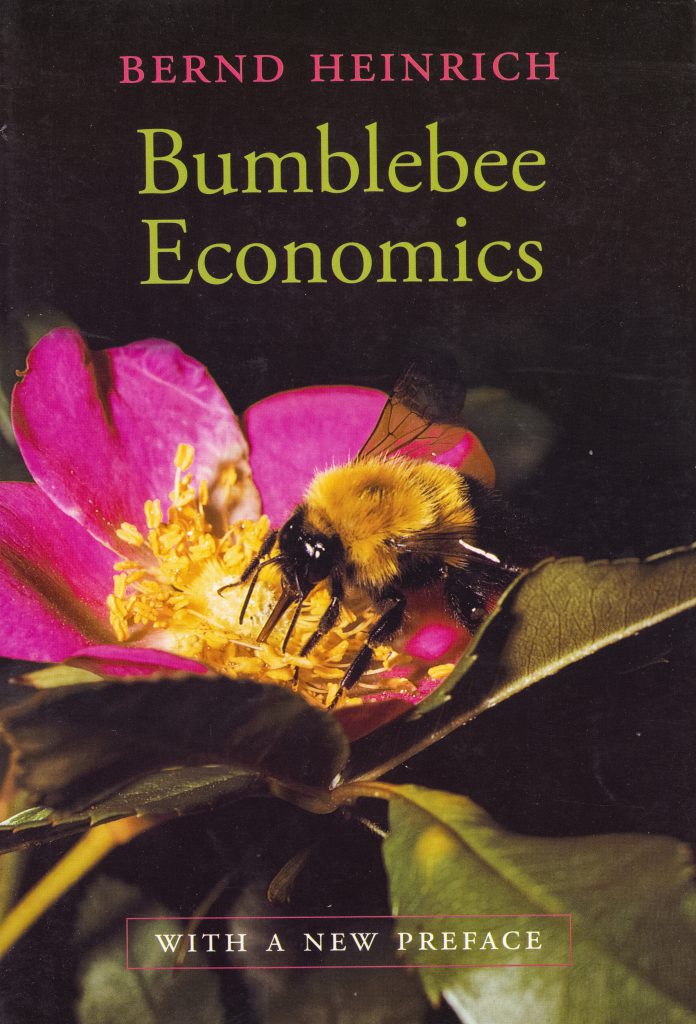First published: 1979.
Library copy published: 2004.

“Even though the bees are free agents, an order ensues out of their combined actions, as if each individual were led by an invisible hand.” p. 140
“In this sense a bumblebee hive bears some interesting resemblances to the economic model outlined by Adam Smith in Wealth of Nations.” p. 144
“The allocation of foraging specialists in bumblebees, resulting in the specialization of individual and consequent advantage to the colony, is also analogous to Smith’s concept of specialization in human societies.” p. 144
“In social bees, of course, the capital exchanged among different specialists in the colonony is honey and pollen.” p. 145
“As in the economic system described by Smith, there is seldom inflation in the bee’s system—a given amount of honey (capital) always represents a more or less constant amount of labor. This is because strikes, used in the human system to increase by force the value of labor, are impossible. In the bee’s world scabs are legion, and the value of labor cannot be increased artificially (unrelated to effort required to make the product) because there is no organized force to eliminate competition among labor. Neither is there tyranny from above. There are no monopolies controlling any given resources. All of the bees have access to all of the flowers.” p. 146